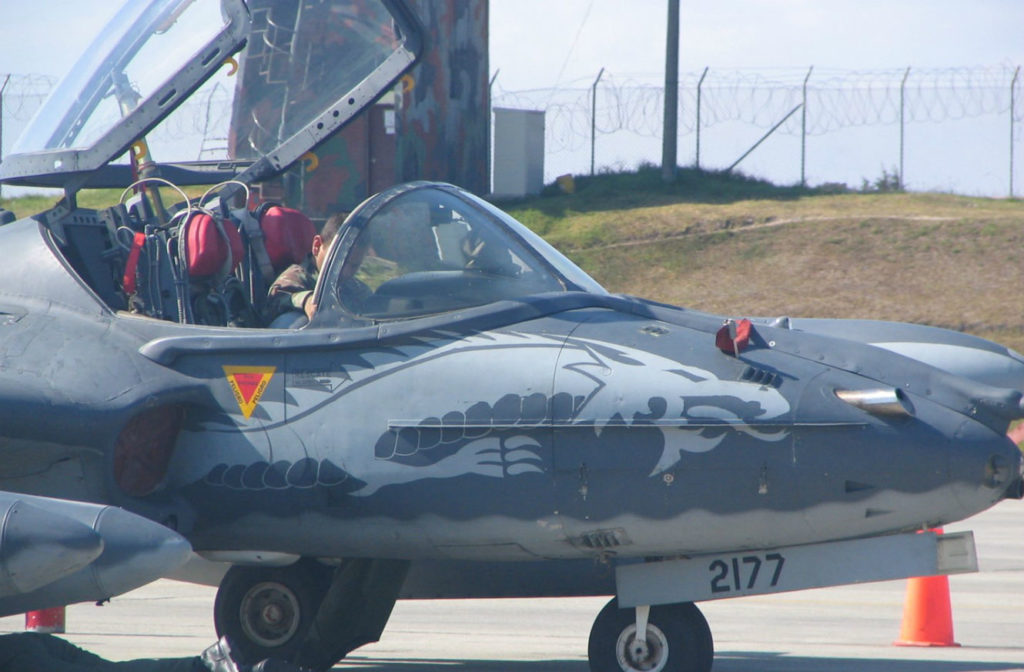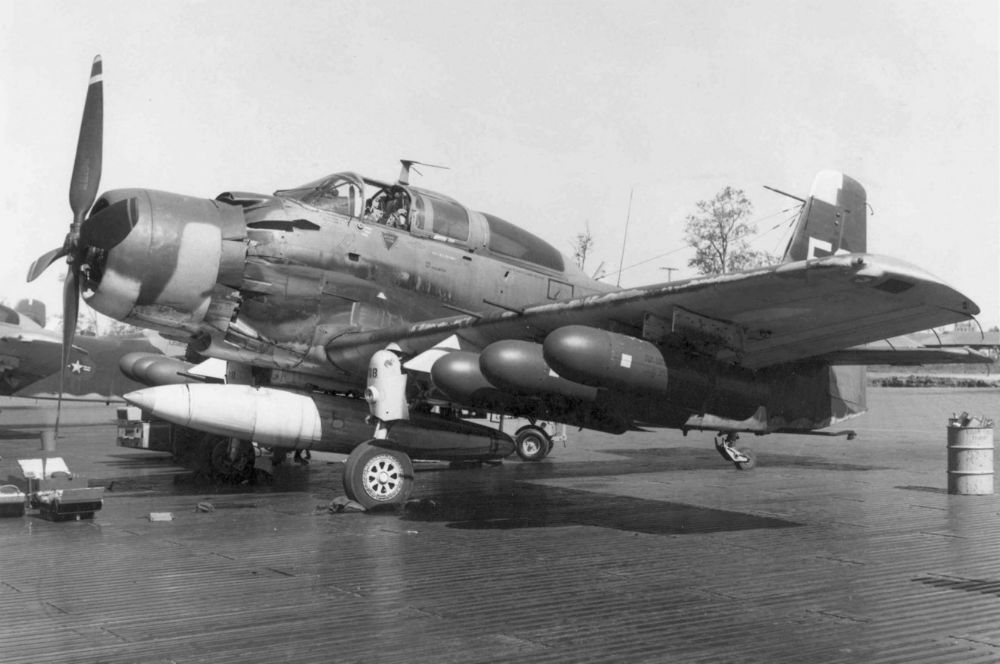Light Attack: Removing the Veil on OA-X

There has been a recent flurry of press attention on OA-X, an Air Force effort to obtain off-the-shelf light attack aircraft. Sen. McCain’s recent publication of Restoring American Power — which calls for the Air Force to acquire 300 light attack aircraft — will no doubt intensify interest in the idea, with many constituencies trying to define OA-X for their own benefit and profit. Appearing to emerge out of the blue, the idea has garnered some degree of instant opposition, not all of it informed. The OA-X is already well-defined. It is the result of an effort that started nine years ago in the height of the surge in Iraq and is regaining currency as a result of the expanding use of airpower to engage violent extremist organizations in the Middle East and elsewhere. Like many good ideas, it has as its genesis another successful effort from the past. Contrary to popular opinion, the Department of Defense can be remarkably good at turning to successful historical examples.
In 1966, the Air Force found itself in a conundrum. As the United States slid deeper into Southeast Asia, the Air Force’s stable of fighters was dominated by fast-moving fighters designed for high-intensity conflict with the Soviets, including an expected exchange of nuclear weapons. Aircraft like the F-101 and F-105 were optimized for the nuclear strike role but not for conventional counterland missions. Our true multirole fighter, the mighty Phantom II, was an adaptation of a Navy fleet defense fighter. The Tactical Fighter Experimental, a joint program forced on the U.S. Air Force and Navy by Secretary of Defense Robert S. MaNamara, was encountering problems in flight testing. The Navy variant would be cancelled in 1968. The Air Force was left without a modern attack capability and was forced to use a Korean-Vintage A-1 Skyraider that had been retired by the Navy.
This turned out to be a blessing in disguise.

The Skyraider was a star. Large, powerful, and with a heavy payload and long endurance, it served throughout the Vietnam War. But even as Skyraiders were earning respect in close air support and rescue missions, the Air Force was developing parallel solutions. In late 1965, the Air Force took the interim step of ordering an off-the-shelf attack aircraft based on the Navy’s A-7A Corsair II — making the announcement a mere 39 days after the first flight of the airplane. The Air Force’s A-7D variant entered service in 1970 and flew for the next 22 years.
The interim step led rapidly to a custom solution. In 1966, the Air Force began the A-X program, which would eventually lead to the A-10. Meanwhile, interim efforts continued. In 1967, the U.S. Air Force inked a contract with Cessna to convert 39 YA-37 from T-37 trainers, deploying them in combat to Bien Hoa Air Base in South Vietnam after a four-month spin-up. The combat demo, called Combat Dragonlasted from August to December 1967. The 604th Air Commando Squadron flew 25 A-37A for almost 5,000 sorties (combat missions) in five months, evaluating suitability, maintainability, and supportability. The squadron flew close air support (CAS), armed reconnaissance, escort, and night interdiction, with no combat losses. This operational test in combat led directly to the A-37B, which remained in service until 1991 and still remains in foreign service.
While not strictly an attack aircraft, the U.S. Air Force also threw their brand new observation aircraft, the OV-10, into service before the new-aircraft smell wore off. Deliveries of the production OV-10As started in 1968 to Hurlburt Field, and in short order, the first six Air Force OV-10As arrived at Bien Hoa on July 31, 1968. This deployment was called Combat Bronco, an operational testing and evaluation of the aircraft. The aircraft flew forward air control, reconnaissance, escort, and observation missions in the skies over Vietnam. After 552 sorties, the demo was complete on October 30, 1968, and so well did the evaluation proceed that it quickly led to the orderly introduction of the OV-10 aircraft into the Air Force combat inventory, the establishment of operational training and maintenance requirements, and the testing of special equipment in the different forward air control roles. The Navy flew the OV-10 as a light attack bird. The VAL-4 “Black Ponies” deployed with OV-10 in March of 1969 as a light attack squadron, and there they stayed until 1972. This effort inspired the Navy’s Combat Dragon II demonstration in Iraq last year, with OV-10G+ aircraft borrowed from NASA.
The implications should be clear. Faced with pressures in Vietnam and armed with a fleet of aircraft designed for an entirely different kind of conflict, the U.S. Air Force took several paths to get suitable combat aircraft into the fight, acquiring ex-Navy Skyraiders, jumping on the Navy’s development of the A-7, modifying the A-37 from a trainer aircraft, and starting the A-X program. With the exception of the A-X, the approach avoided the pitfalls of a drawn-out development program in order to get suitable aircraft into the field as quickly as possible. That approach is being considered now — with the OA-X as an off-the-shelf solution and the potential for follow-on programs to produce other attack aircraft. In short, the path that is being proposed for OA-X is a repeat of a highly successful airplane acquisition methodology pursued under the pressures of a long war some 50 years ago.
The OA-X
The OA-X had its genesis in 2007, as the surge in Iraq reached maximum height and the demands on airpower likewise increased, further stressing fault lines that had been under pressure since 1991. At Air Combat Command, the task of conceptualizing an aircraft optimized for irregular warfare came to the Joint Integration Division (ACC/A3F), which was led by Col. George “Shack” Bochain, the kind of combat-experienced leader you read about. A3F was the CAS/JTAC shop, staffed by experienced operators who kept current by deploying forward even while on the staff. The OA-X enabling concept was put together from a simple premise: If we could build an aircraft to be a modern version of the A-1E or OV-10D, what characteristics would it have? The primary authors of the concept — Lt. Col. David “Toro” Torres-Laboy, Lt. Col. Mike “Meat” Saridakis, and myself — had hundreds of combat missions between us as well as significant experience in ground combat. We also had a capable backup team of JTACs and attack pilots to help us get it right. In late 2008, the OA-X Enabling Concept was signed by the commander of ACC, Gen. John Corley.
The trials and tribulations of related light attack efforts will be chronicled elsewhere at another time. The key was that we had a concept for what we wanted in a combat aircraft and why. We wanted a turboprop powerplant because they are easier to maintain than the alternative, highly resistant to foreign object damage, staggeringly fuel-efficient compared to a jet engine, and precisely the proper propulsion for an aircraft that would operate from the surface to 25,000 feet. We wanted guns because they are responsive and accurate in a dynamic environment and had proved their value over and over in Iraq and Afghanistan. We wanted optical sensors and precision munitions capability like the existing fighter/attack fleet. We wanted advanced communications, especially the emerging digital CAS capabilities that were then hitting the field in numbers. And it was pretty clear by then that we were going to need the ability to operate from short and rough fields on a logistical shoestring to free light attack from the basing constraints of the jet aircraft. We would need to be able to expand the reach of light attack into corners of the world where the fast jets could not be persistent. None of this required advanced development programs, huge piles of money, or long timeframes. Suitable aircraft were emerging, and if we had to rely on up-armed trainer derivatives, it had been done before — and well.
Along the way, other problems that could be addressed with this program also became clear. The Air Force needed (and still needs) more cockpits to produce experienced fighter pilots. Readiness was dropping rapidly and if we added attack squadrons to the force, those squadrons could share the burden of constant deployments and spread the load. A tiny fuel demand would reduce the insatiable demand for convoys to run the IED gauntlet — reducing casualties among our joint partners. There were airfields that would never support a fast jet that could support light attack. At home station, the Air Force did not have sufficient sorties available to keep its JTACs qualified and current. There were Air Guard squadrons that were losing their flying missions and sidelining experienced aviators. All of these problems could be reduced by using aircraft that cost far less than its fast-jet counterparts, which could be affordably operated at price points not seen for decades. The OA-X we had envisioned in late 2007 was proving to be of greater utility than we originally thought.
Today
Looking back, the OA-X Enabling Concept has held together remarkably well — so well that when we reviewed the concept in 2013, we elected not to change a word. If the need was clear in 2008 (and it was), the need is acute now. Readiness has tanked, costs have climbed while resources have diminished, and the threat has spread beyond Iraq and Afghanistan. The situation is clearly analogous to Vietnam, where the United States faced a conflict different from the one it planned. The stresses today are far greater. No Air Force in history has had to sustain operations for 25 years of continuous combat operations. We can no longer pretend that the demand for combat airpower in irregular conflicts will end soon. The re-emergence of great power competition does not automatically translate into a reduction of irregular threats. Faced with a problem set that will not go away and a fighter/attack fleet that has been ridden hard and put away wet, it makes perfect sense to add combat capability quickly, and it is entirely reasonable that that airpower be designed for the conflicts we face today. OA-X is intended to be an additive capability — not to replace any other element of the fighter/attack fleet. The Air Force is not trading away its ability to fight a peer adversary, but it is making sure that the forces necessary for a modern theater war are ready for that fight by not frittering the lifespans of our advanced legacy fighters away on tasks that could be done as well for far less cost. The Air Force has done this before, and it has good reason to try again.
Col. Mike “Starbaby” Pietrucha was an instructor electronic warfare officer in the F-4G Wild Weasel and the F-15E Strike Eagle, amassing 156 combat missions and taking part in two-an- a-half SAM kills over ten combat deployments. As an irregular warfare operations officer, Col. Pietrucha has two additional combat deployments in the company of U.S. Army infantry, combat engineer, and military police units in Iraq and Afghanistan. The views expressed are those of the author and do not necessarily reflect the official policy or position of the Department of the Air Force or the U.S. government.
Image: Author

